Audi Q6 e-tron vs Nissan Leaf – Which car suits you better?
Two cars, one duel: Audi Q6 e-tron meets Nissan Leaf.
Which one wins in performance, efficiency and value for money? Find out now!
Here’s where it gets real: The technical differences in detail
Costs and Efficiency: Price and efficiency are key factors when choosing a car – and this is often where the real differences emerge.
Nissan Leaf has a markedly advantage in terms of price – it starts at 30800 £, while the Audi Q6 e-tron costs 54400 £. That’s a price difference of around 23657 £.
In terms of energy consumption, the advantage goes to the Audi Q6 e-tron: with 15.60 kWh per 100 km, it’s barely noticeable more efficient than the Nissan Leaf with 16.70 kWh. That’s a difference of about 1.10 kWh.
As for range, the Audi Q6 e-tron performs significantly better – achieving up to 656 km, about 271 km more than the Nissan Leaf.
Engine and Performance: Power, torque and acceleration say a lot about how a car feels on the road. This is where you see which model delivers more driving dynamics.
When it comes to engine power, the Audi Q6 e-tron has a significantly edge – offering 516 HP compared to 217 HP. That’s roughly 299 HP more horsepower.
In acceleration from 0 to 100 km/h, the Audi Q6 e-tron is markedly quicker – completing the sprint in 4.30 s, while the Nissan Leaf takes 6.90 s. That’s about 2.60 s faster.
In terms of top speed, the Audi Q6 e-tron performs clearly better – reaching 230 km/h, while the Nissan Leaf tops out at 157 km/h. The difference is around 73 km/h.
There’s also a difference in torque: the Audi Q6 e-tron pulls significantly stronger with 855 Nm compared to 340 Nm. That’s about 515 Nm difference.
Space and Everyday Use: Whether family car or daily driver – which one offers more room, flexibility and comfort?
Both vehicles offer seating for 5 people.
In curb weight, the Nissan Leaf is visibly lighter – 1580 kg compared to 2200 kg. The difference is around 620 kg.
In terms of boot space, the Audi Q6 e-tron offers noticeably more room – 526 L compared to 394 L. That’s a difference of about 132 L.
In maximum load capacity, the Audi Q6 e-tron performs significantly better – up to 1529 L, which is about 739 L more than the Nissan Leaf.
When it comes to payload, Audi Q6 e-tron distinctly takes the win – 540 kg compared to 415 kg. That’s a difference of about 125 kg.
Our conclusion: The Audi Q6 e-tron proves to be outperforms the competitor in nearly every area and thus becomes our DriveDuel Champion!
Overall, Audi Q6 e-tron is the better all-rounder in this comparison.
Audi Q6 e-tron
The Audi Q6 e-tron represents a significant step forward in the realm of electric vehicles, offering a perfect blend of cutting-edge technology and timeless design. With its spacious interior and advanced infotainment system, it provides both comfort and connectivity for the modern driver. The Q6 e-tron embodies Audi's commitment to sustainability without compromising on performance or luxury.
details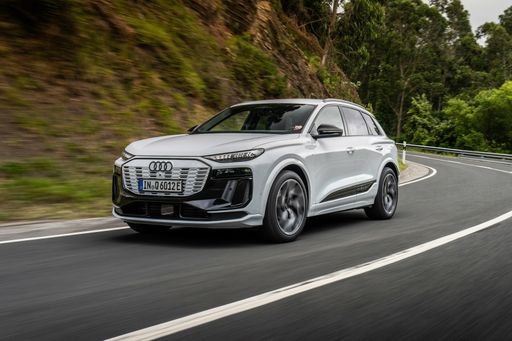 @ audi-mediacenter.com
@ audi-mediacenter.com
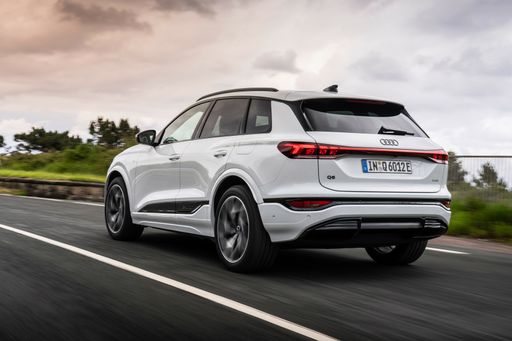 @ audi-mediacenter.com
@ audi-mediacenter.com
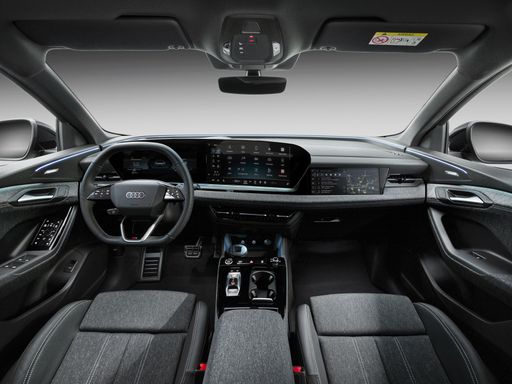 @ audi-mediacenter.com
@ audi-mediacenter.com
Nissan Leaf
The Nissan Leaf stands out as a pioneering model in the realm of electric vehicles, known for its impressive blend of practicality and eco-friendliness. It offers a smooth and quiet driving experience, making it an ideal choice for city commuting and longer journeys alike. The interior design is both comfortable and intuitive, providing drivers with a sense of modernity and ease of use.
details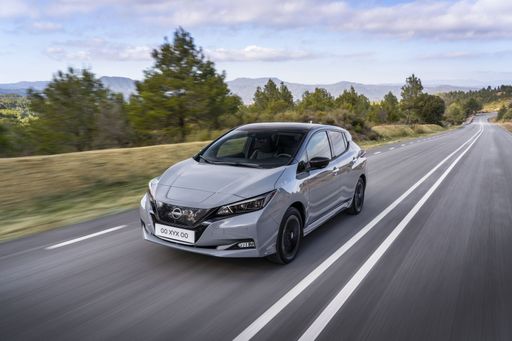 @ germany.nissannews.com
@ germany.nissannews.com
 @ germany.nissannews.com
@ germany.nissannews.com
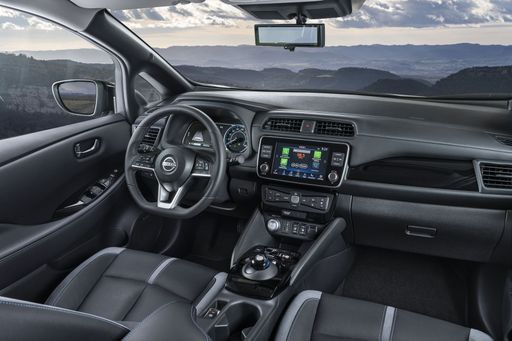 @ germany.nissannews.com
@ germany.nissannews.com
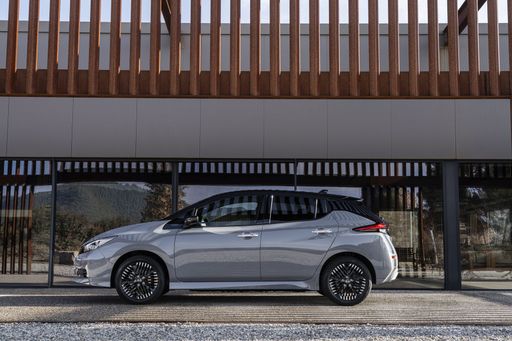 @ germany.nissannews.com
@ germany.nissannews.com

|

|
|
|
|
Costs and Consumption |
|
|---|---|
|
Price
54400 - 91900 £
|
Price
30800 - 37200 £
|
|
Consumption L/100km
-
|
Consumption L/100km
-
|
|
Consumption kWh/100km
15.6 - 18.9 kWh
|
Consumption kWh/100km
16.7 - 17.8 kWh
|
|
Electric Range
482 - 656 km
|
Electric Range
270 - 385 km
|
|
Battery Capacity
75.8 - 94.9 kWh
|
Battery Capacity
39 - 59 kWh
|
|
co2
0 g/km
|
co2
0 g/km
|
|
Fuel tank capacity
-
|
Fuel tank capacity
-
|
Dimensions and Body |
|
|---|---|
|
Body Type
SUV
|
Body Type
Hatchback
|
|
Seats
5
|
Seats
5
|
|
Doors
5
|
Doors
5
|
|
Curb weight
2200 - 2425 kg
|
Curb weight
1580 - 1756 kg
|
|
Trunk capacity
499 - 526 L
|
Trunk capacity
385 - 394 L
|
|
Length
4771 mm
|
Length
4490 mm
|
|
Width
1939 - 1965 mm
|
Width
1788 mm
|
|
Height
1665 - 1685 mm
|
Height
1540 - 1545 mm
|
|
Max trunk capacity
1361 - 1529 L
|
Max trunk capacity
790 L
|
|
Payload
540 kg
|
Payload
384 - 415 kg
|
Engine and Performance |
|
|---|---|
|
Engine Type
Electric
|
Engine Type
Electric
|
|
Transmission
Automatic
|
Transmission
Automatic
|
|
Transmission Detail
Reduction Gearbox
|
Transmission Detail
Reduction Gearbox
|
|
Drive Type
Rear-Wheel Drive, All-Wheel Drive
|
Drive Type
Front-Wheel Drive
|
|
Power HP
252 - 516 HP
|
Power HP
150 - 217 HP
|
|
Acceleration 0-100km/h
4.3 - 7.6 s
|
Acceleration 0-100km/h
6.9 - 7.9 s
|
|
Max Speed
210 - 230 km/h
|
Max Speed
144 - 157 km/h
|
|
Torque
450 - 855 Nm
|
Torque
320 - 340 Nm
|
|
Number of Cylinders
-
|
Number of Cylinders
-
|
|
Power kW
185 - 380 kW
|
Power kW
110 - 160 kW
|
|
Engine capacity
-
|
Engine capacity
-
|
General |
|
|---|---|
|
Model Year
2024 - 2025
|
Model Year
2019
|
|
CO2 Efficiency Class
A
|
CO2 Efficiency Class
A
|
|
Brand
Audi
|
Brand
Nissan
|
What drivetrain options does the Audi Q6 e-tron have?
Available configurations include Rear-Wheel Drive or All-Wheel Drive.
The prices and data displayed are estimates based on German list prices and may vary by country. This information is not legally binding.
